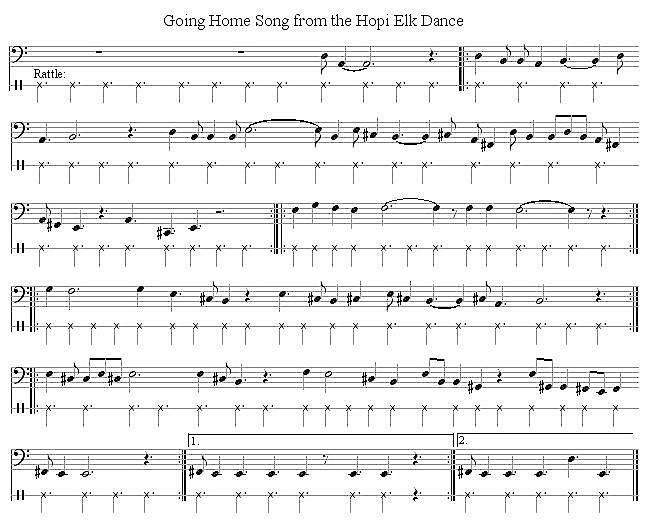
Desert Sonata (1994-95)
1. Wind
2. Night
Desert Sonata (1994-95) for piano uses a rhythmic language I've developed from indigenous American sources: the multi-tempo structures of Conlon Nancarrow and Charles Ives, and the dances of the Hopi, Zuni, and other Pueblo Indians. The materials are derived from the "Going Home" section of a Hopi Elk Dance, whose melody, switching between quarter-note and dotted-quarter-note beats, appears almost in full (if harmonically disguised) in the latter half of the "Night" movement. Here's my own transcription of the original melody:

The "Wind" movement borrows isorhythmic techniques from Conlon Nancarrow's Studies for Player Piano, especially Studies Nos. 7 and 45, which have probably never appeared before in works for a live keyboard player. In particular, it ends with an isorhythmic passacaglia in 41/16 meter, while a section of "Night" called "Canonlands" subjects the theme's motives to canonic treatment. I was working on the piece in 1994 when I visited Conlon Nancarrow in Mexico City. Every morning I was there a neighboring rooster woke me up with incessant repetitions of a five-note motif - C E E E-flat C. Its rhythm was similar to that of the beginning of the Elk Dance, and in desperation I finally worked the rooster's melody into the second movement's coda.
Pianist Lois Svard commissioned Desert Sonata, and I wrote it to take advantage of not only her phenomenal technique, but even more of the atmosphere of mystery she weaves so wonderfully around every piece she plays. The piece is recorded on her Lovely Music CD Other Spaces.
- Kyle Gann
Return to List of scores and recordings
Return to List of compositions